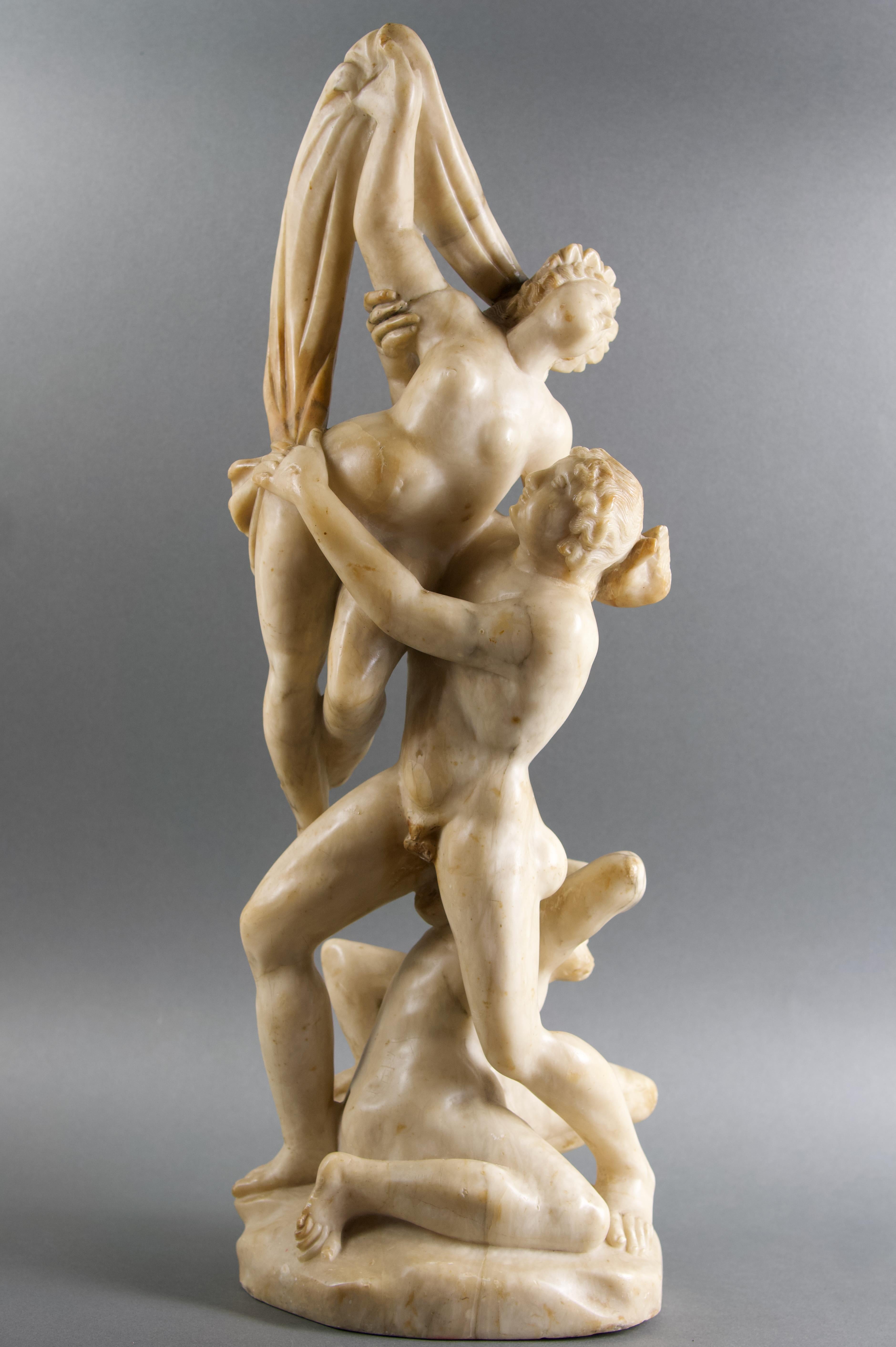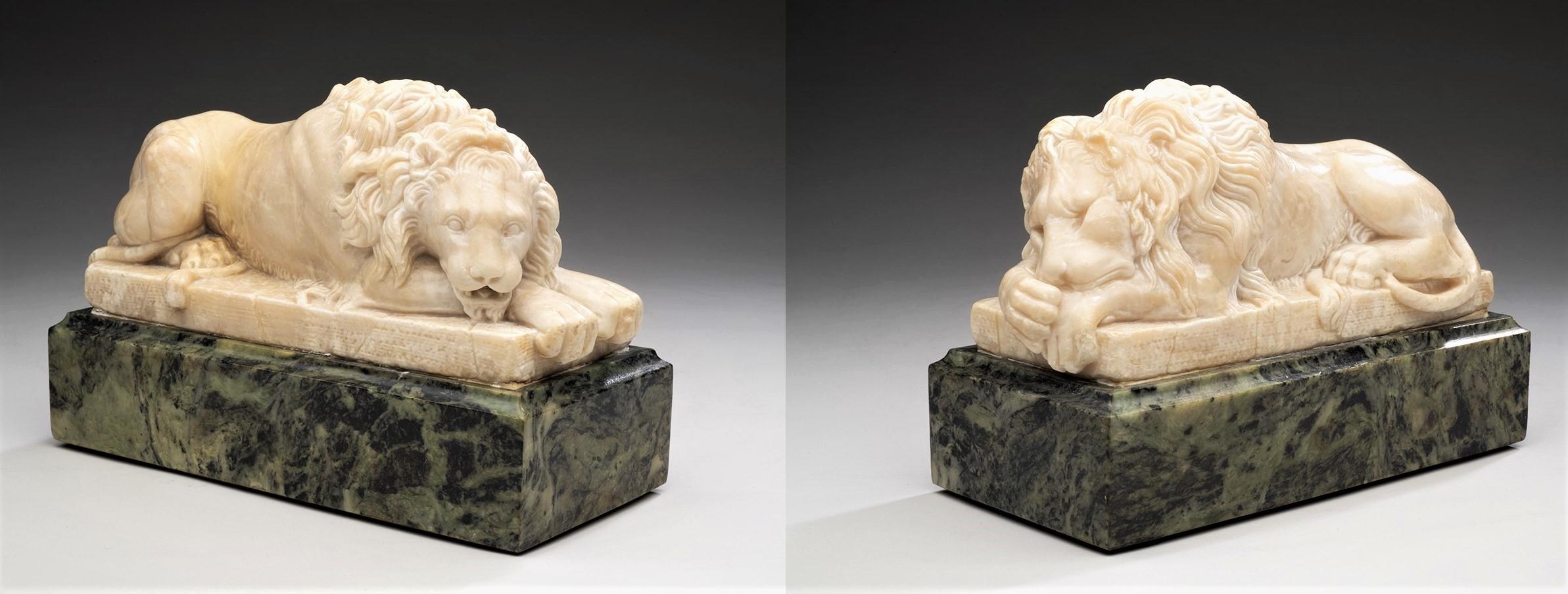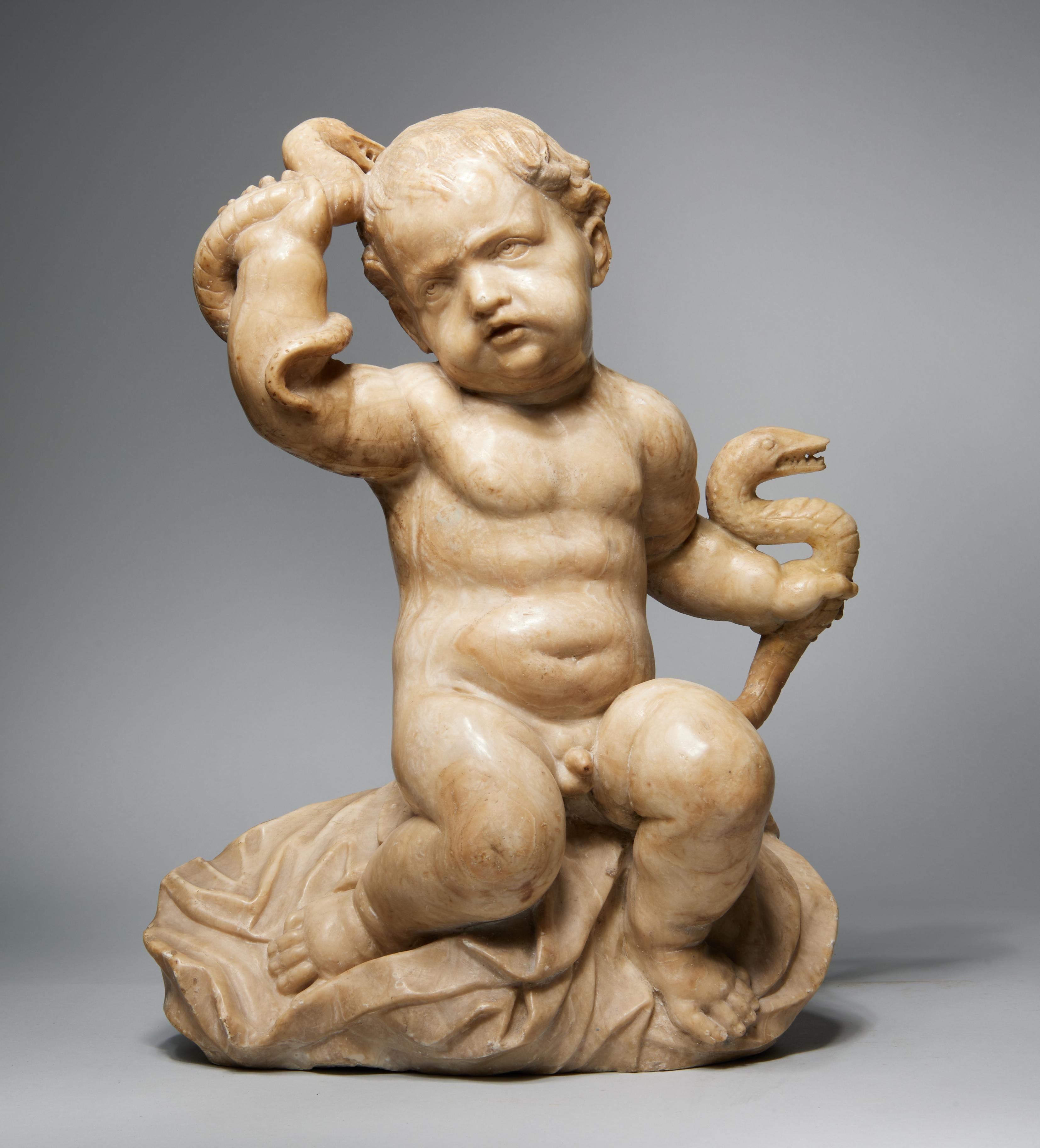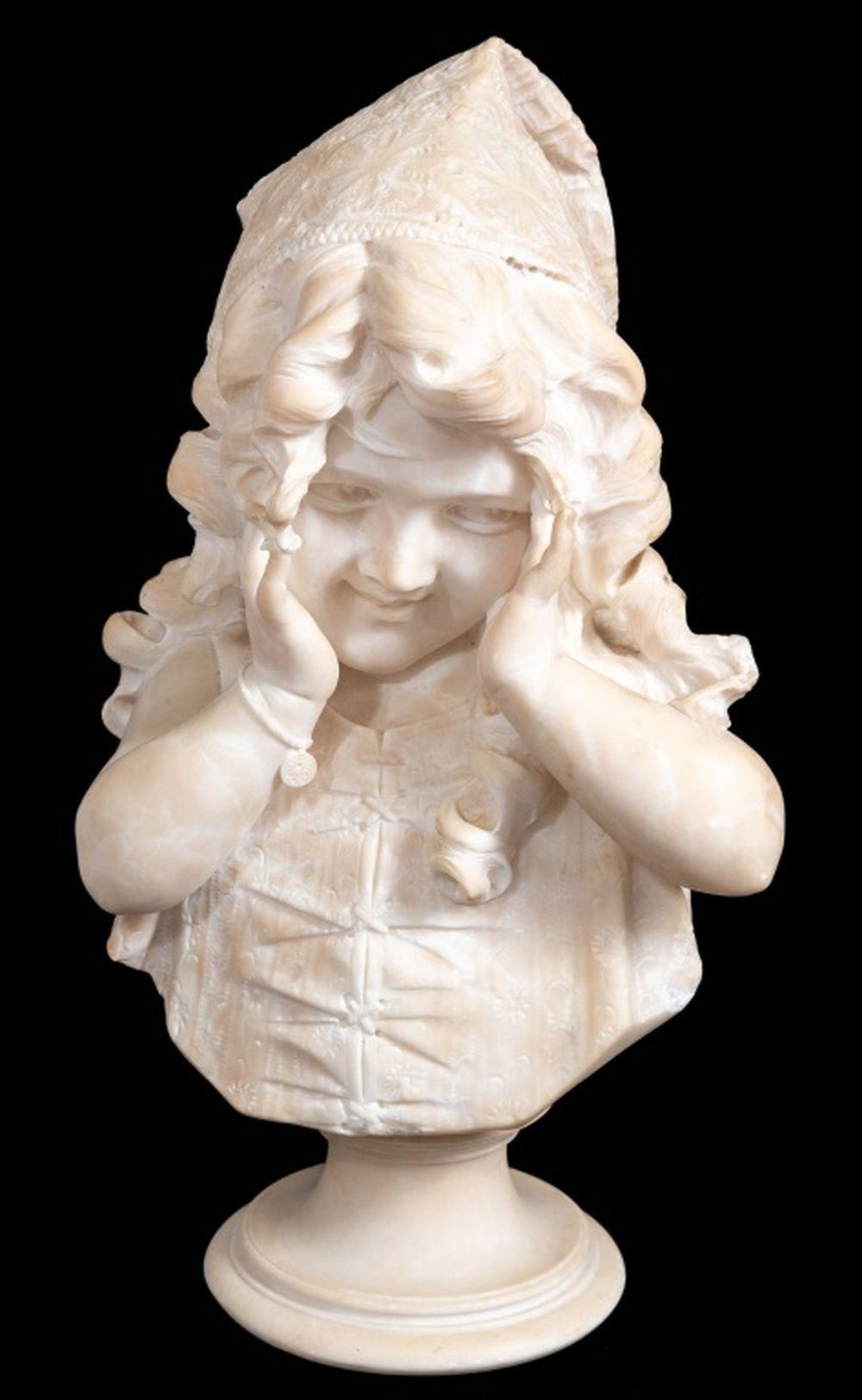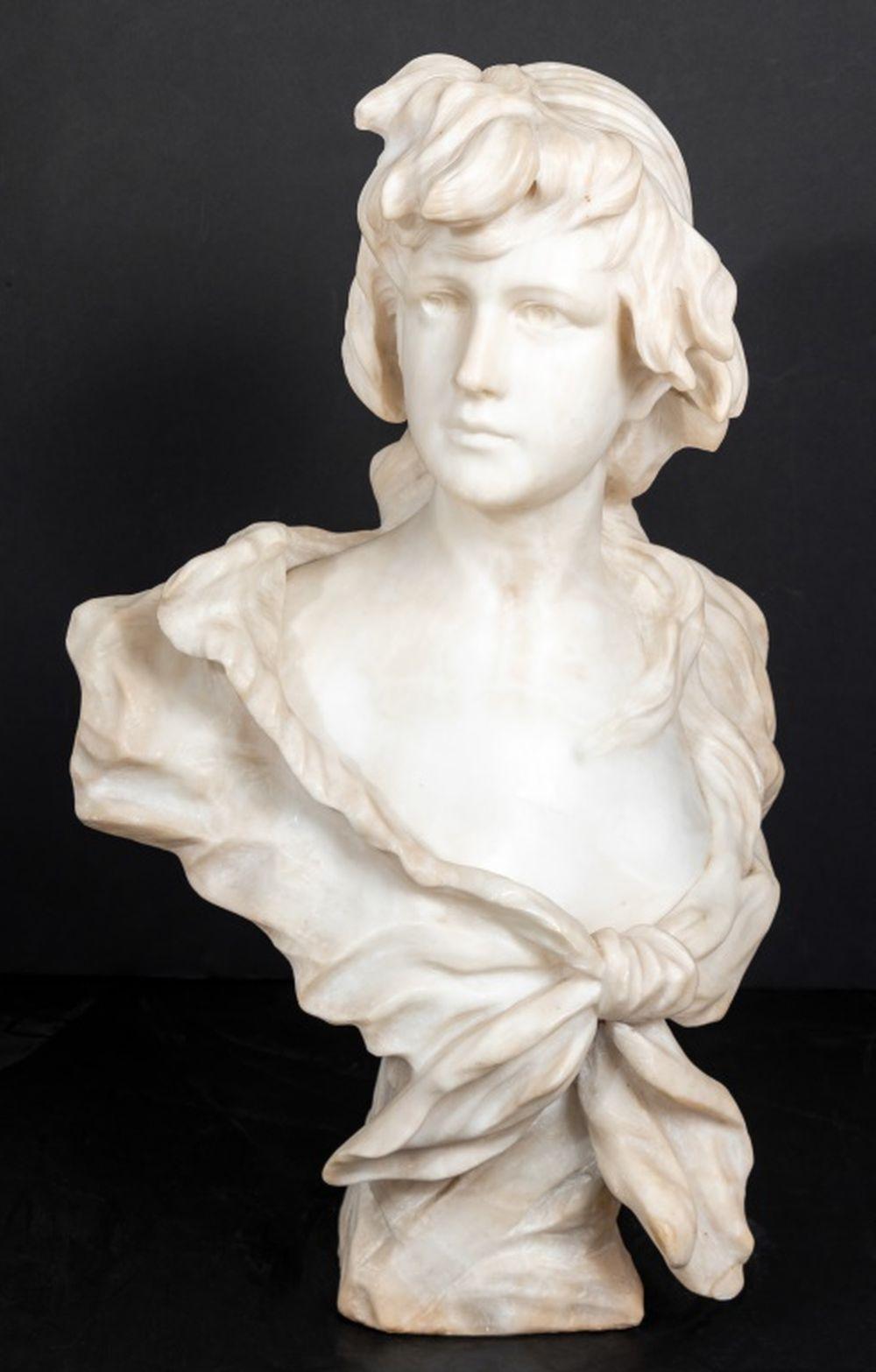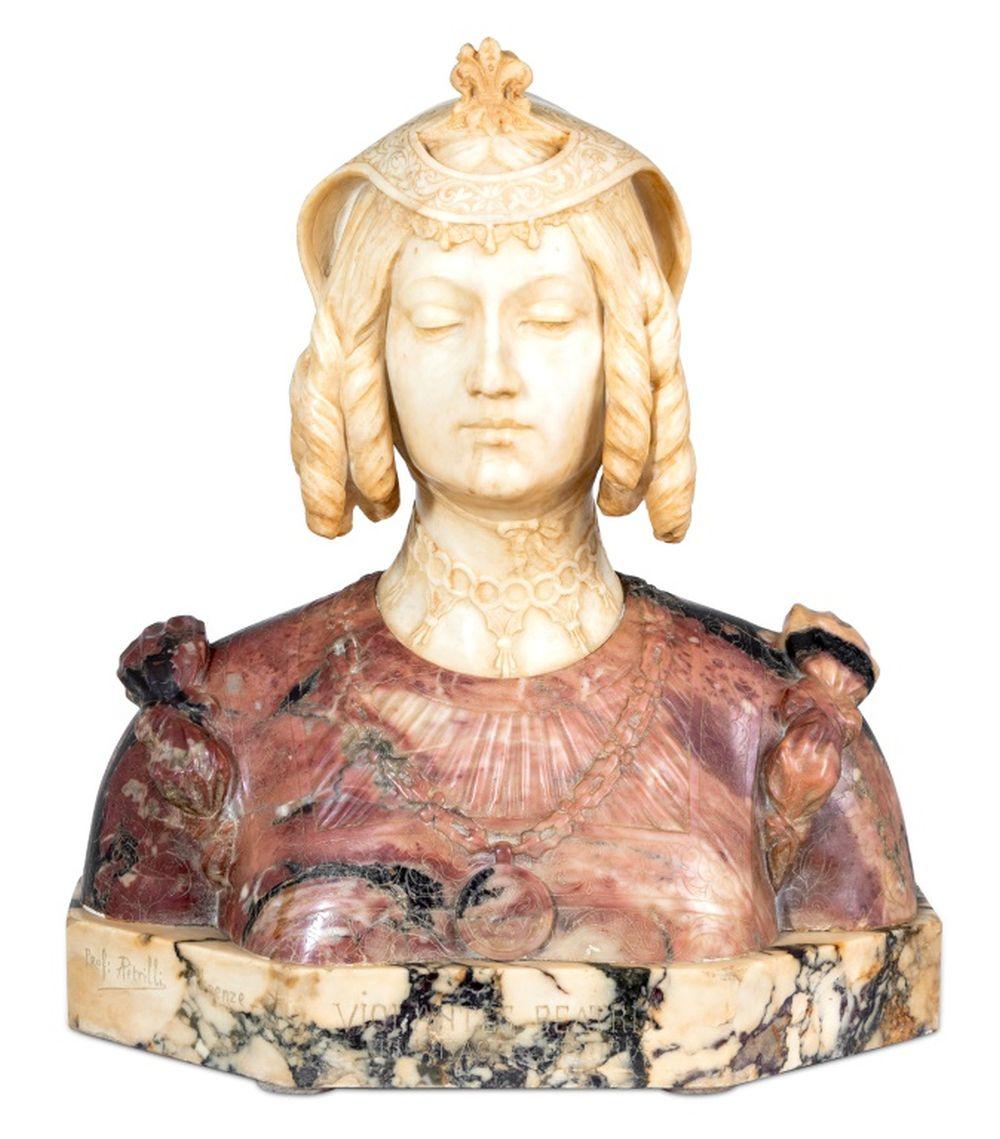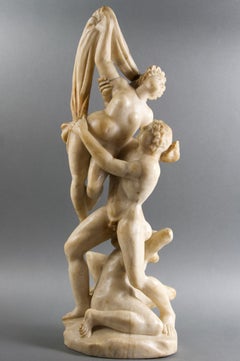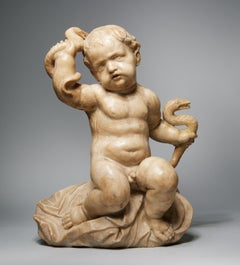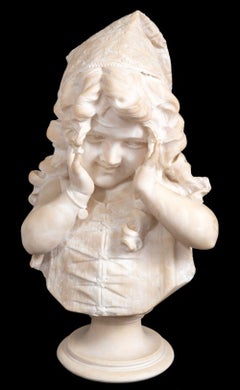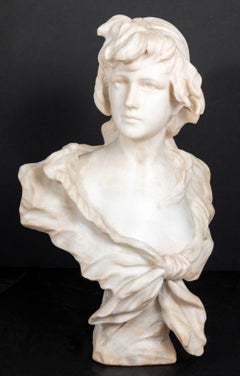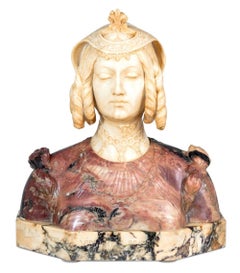Items Similar to Grande Scultura in Alabastro Satiro con Cimbali Bottega Volterrana XIX secolo
Video Loading
Want more images or videos?
Request additional images or videos from the seller
1 of 14
UnknownGrande Scultura in Alabastro Satiro con Cimbali Bottega Volterrana XIX secolocirca 1870
circa 1870
On Hold
$4,267.60
On Hold
£3,196.10
On Hold
€3,600
On Hold
CA$5,982.11
On Hold
A$6,590.89
On Hold
CHF 3,411.84
On Hold
MX$79,356
On Hold
NOK 43,202.18
On Hold
SEK 40,585.72
On Hold
DKK 27,418.47
About the Item
Grande scultura in alabastro raffigurante il Satiro con i cimbali, bottega volterrana del 19 secolo.
Il satiro con cimbali è una scultura romana in marmo conservata al museo degli Uffizi di Firenze. La scultura raffigura un satiro colto in un vivace passo di danza, mentre batte il tempo con una nacchera da piede (in greco kroupezeion). La parte antica della scultura comprende il corpo inclusa la base, mentre la testa e le braccia si debbono ad un’integrazione cinquecentesca.
Questo splendido marmo appartenne alla collezione del prelato romano Eurialo Silvestri. Passato brevemente da Villa Giulia, il marmo fu poi acquistato dai Medici già sul finire del XVI secolo, per poi essere portato a Firenze nei primi anni del XVII secolo . Negli ultimi anni di quel secolo fece finalmente il suo ingresso in Tribuna per essere accolto nel novero delle più celebri sculture della collezione granducale. Il gruppo fu ampiamente copiato in epoca imperiale per essere destinato all’arredo di ville suburbane e residenze di lusso.
In epoca di Grand Tour diviene una delle sculture di maggior successo, ampiamente replicata in bronzo. Poche sono invece le repliche in marmo o in alabastro; questa in particolare è ascrivibile alle botteghe volterrane, realizzata con il pregiato alabastro della zona.
Ottime stato di conservazione, priva di restauri.
Misure H cm 63 L max cm 36 P max cm 24 D base cm 20
- Creation Year:circa 1870
- Dimensions:Height: 24.81 in (63 cm)Width: 14.18 in (36 cm)Depth: 9.45 in (24 cm)
- Medium:
- Movement & Style:
- Period:
- Condition:
- Gallery Location:Pistoia, IT
- Reference Number:1stDibs: LU2746216895872
About the Seller
4.8
Vetted Professional Seller
Every seller passes strict standards for authenticity and reliability
Established in 1997
1stDibs seller since 2024
17 sales on 1stDibs
Typical response time: 1 to 2 days
- ShippingRetrieving quote...Shipping from: PISTOIA, Italy
- Return Policy
Authenticity Guarantee
In the unlikely event there’s an issue with an item’s authenticity, contact us within 1 year for a full refund. DetailsMoney-Back Guarantee
If your item is not as described, is damaged in transit, or does not arrive, contact us within 7 days for a full refund. Details24-Hour Cancellation
You have a 24-hour grace period in which to reconsider your purchase, with no questions asked.Vetted Professional Sellers
Our world-class sellers must adhere to strict standards for service and quality, maintaining the integrity of our listings.Price-Match Guarantee
If you find that a seller listed the same item for a lower price elsewhere, we’ll match it.Trusted Global Delivery
Our best-in-class carrier network provides specialized shipping options worldwide, including custom delivery.More From This Seller
View AllItalian Neoclassical Sculptural Group in Alabaster "The Rape of the Sabine Women" 18th
Located in Pistoia, IT
"The Rape of the Sabine Women," veined alabaster, large sculptural group with classical subject, Volterra manufacture, 18th century.
The so-called Rape of the Sabine Women is a scu...
Category
1790s Italian School Figurative Sculptures
Materials
Alabaster
Venere Colca Scultura Neoclassica in Marmo inizio del XIX secolo
Located in Pistoia, IT
Venere accovacciata, scultura neoclassica in marmo di Carrara, inizio 19 secolo.
Un turista inglese del diciottesimo a Firenze scrisse che di tutte le Veneri degli Uffizi, "solo u...
Category
Early 19th Century Italian School Figurative Sculptures
Materials
Marble
Large Neoclassical White Marble Sculpture Venus Italica mid-19th century
Located in Pistoia, IT
Venus Italica, imposing sculpture in white Carrara marble, mid-nineteenth-century Roman atelier.
Antonio Canova made several sculptures depicting Venus. The first was made as compen...
Category
Mid-19th Century Italian School Figurative Sculptures
Materials
Marble
"La Danza", Grande scultura in Marmo bianco di Carrara XIX secolo
By Antonio Giovanni Lanzirotti
Located in Pistoia, IT
Antonio-Giovanni Lanzirotti, "La Danza", grande scultura in marmo bianco di Carrara, firmata AG Lanzirotti sulla base.
Antonio Giovanni Lanzirotti, nato a Palermo il 9 maggio 1839 e...
Category
1860s Italian School Figurative Sculptures
Materials
Marble
Large White Marble Bust of Young Woman Signed
By Pio Fedi 1
Located in Pistoia, IT
Large white Carrara marble bust depicting a young woman with her hair adorned with leaves and bunches of grapes, signed "Fedi" on the back.
Originally from Viterbo but a Florentine ...
Category
1860s Italian School Figurative Sculptures
Materials
Marble
Busto in Marmo Statuario della Venere Italica seconda metà XIX secolo Firmato
Located in Pistoia, IT
Busto in marmo bianco statuario della Venere Italica firmato Antonio Frilli - Florence, Italia, seconda metà del 19 secolo.
Questo busto a grandezza naturale esprime tutta la cap...
Category
19th Century Italian School Figurative Sculptures
Materials
Marble
You May Also Like
18th/19th C. Italian Alabaster Sculpture of Infant Hercules Wrestling a Snake
Located in Beachwood, OH
18th/19th Century Italian
Infant Hercules Wrestling a Snake
Alabaster
18 x 18 x 6 inches
40 lb.
In Greek mythology, the infant Hercules (Heracles) is famously depicted wrestling wit...
Category
Late 18th Century Italian School Figurative Sculptures
Materials
Alabaster
Neapolitan Girl
By Emilio Fiaschi
Located in Astoria, NY
Emilio Fiaschi (Italian, 1858-1941) Neapolitan Girl Alabaster Bust, late 19th century, depicting a young girl hiding her face behind her hands, on a socle, signed "E Fiaschi" to back...
Category
Late 19th Century Italian School Figurative Sculptures
Materials
Alabaster
Female Figure Bust
Located in Astoria, NY
Italian School Female Figure Carved Alabaster Bust, late 19th century, the portrait with tied back hair and flowing dress tied at her breast, on a rockwork plinth, unsigned. 26" H x ...
Category
Late 19th Century Italian School Figurative Sculptures
Materials
Alabaster
"Violante Beatrice of Bavaria"
Located in Astoria, NY
Aristide Petrilli (Italian, 1868-1930) "Violante Beatrice of Bavaria" Alabaster Bust, late 19th century, the bust on an angular plinth, signed and titled. 17" H x 16" W x 7" D.
Category
Late 19th Century Italian School Figurative Sculptures
Materials
Alabaster
Pair of Italian "Alabaster Stone Lions" after Antonio Canova; Mid 19th Century
Located in SANTA FE, NM
"Pair Recumbent Stone Lions"
after Antonio Canova (1757-1822)
Italian (possibly Florence)
Mid 19th Century
Alabaster, marble
6 x 9 x 4 inches
This is an exquisite pair of Italian alabaster lions on marble bases based on the monumental lions carved by Antonio Canova (1757-1822), the greatest Italian neoclassical sculptor. Canova sculpted the marble lions for the monumental tomb of Pope Clement XIII in St. Peter’s, Rome in 1792
Canova Lions refers to the pair of copies of lion sculptures by Antonio Canova. When Canova created the sculptures in 1792, he installed them on the tomb of Pope Clement XIII. The marble sculptures are some of the most prominent features in St. Peter's Basilica in Rome. Given the intricacies of creating the original Canova lions, some artists created molds and replicated them. A good example is the pair of lion sculptures...
Category
1850s Italian School Figurative Sculptures
Materials
Marble, Alabaster
Figurative Marble Sculpture, "Kindred"
By TONY GANGITANO
Located in San Diego, CA
This is a one of a kind Italian white Carerra marble sculpture by San Diego artist Tony Gangitano. Its dimensions are 10" x 25" x 10". It is on a black granite base. A certificate of authenticity will follow delivery.
This sculpture is a representation of Mary and Christ...
Category
2010s Italian School Figurative Sculptures
Materials
Granite, Marble
